






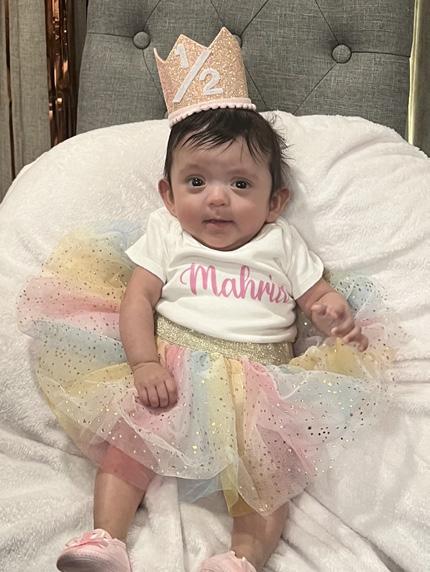

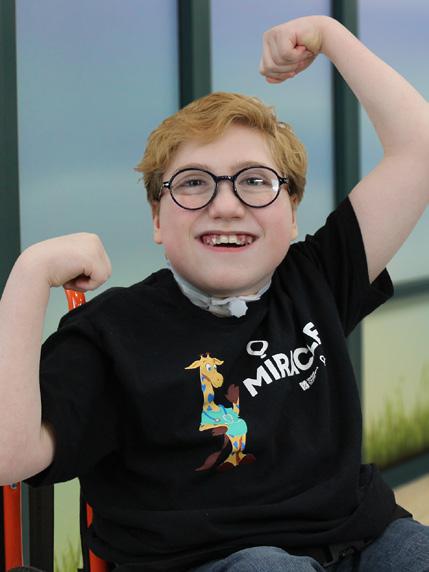
I want to go into every patient’s room at Valley Children’s and tell them, ‘You got this. Keep pushing. One day, this is going to end.’
-Sophia
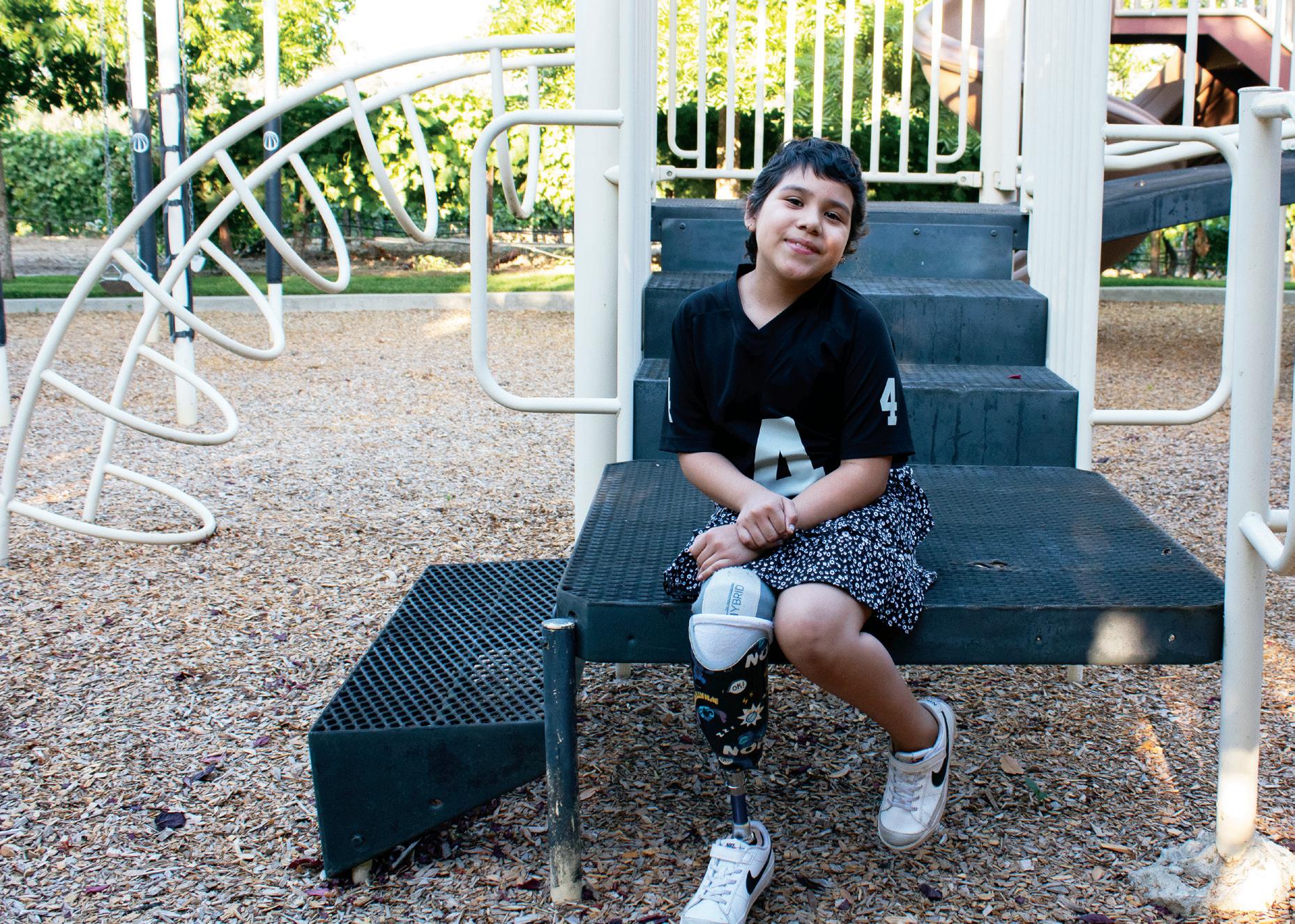
When Sophia was 7 years old, she woke up one morning with a painful, swollen foot. There was no injury or bug bite to explain the symptoms. Her mom, Erendira, tried ice, home remedies and over the counter treatments, but after two days with no change they went to the doctor. Sophia’s X-rays looked normal. A second set of X-rays revealed a spot on her toe bone. After two weeks, Sophia’s pain was so great that she could no longer walk. Her parents decided to bring her to Valley Children’s Emergency Department. New X-rays taken at Valley Children’s revealed the area of concern was growing, and they were referred to the oncology department. An MRI and biopsy confirmed a diagnosis of Ewing sarcoma, a type of cancer that begins in the bones and soft tissue around the bones, mostly occurring in the leg bones of children and young adults.
In April 2022, Sophia started the first of her 14 weekly rounds of chemotherapy. While the treatment succeeded in shrinking the tumor on the toe, additional suspicious areas were appearing on other bones in her feet. Just four months later, Sophia’s parents were faced with the decision of amputation. Hoping for the most active future for their 7-year-old, they opted for amputation of the leg below the knee.
After her amputation, Sophia’s chemotherapy continued. More challenging than the pain or the loss of her leg or her beautiful hair, was battling the fear that she would be rejected by peers. During that difficult time, Sophia and her family spent a lot of time in the Craycroft inpatient unit of Valley Children’s where her nurse Emma helped her and her family immensely. She loved playing in the Child Life Playroom, and she kept up on her schoolwork through online classes.
By December 2022, Sophia got her prosthetic leg and began working with the Valley Children’s pediatric rehabilitation team, spending hours learning to walk and climb stairs, jump on a trampoline and more. She also got to ring the No Mo’ Chemo bell, marking the end of her chemotherapy treatments.
Sophia loves drawing, crafting and now being able to give overhead “airplane” rides to her 5-year-old brother. When asked what activities are hard to do with her prosthetic leg, she can only think of a few: rock climbing (finding a good toe hold), climbing a pole at school (the clang of metal on metal is awkward) and getting through the security gate at Disneyland (it sets off the alarm - but on the other hand they get fast passes!).
On her 9th birthday last year, Sophia got to meet her hero, Derek Carr, at the Touchdown Challenge reception for DC4KIDS. This wonderful birthday surprise invitation by a DC4KIDS member allowed Sophia to ask Derek, who had just moved his family to Louisiana, how they dealt with adapting to new surroundings. Sophia was gearing up for her own transition back to school with new short hair and a new leg. Her bravery was felt by everyone at the event.
Sophia’s bravery has paid off. She loves her new school and says her prosthetic makes her more popular, rather than less. She is active on the playground and was honored as student of the month. Recently, Sophia got to march at the state capitol in Sacramento for a Medi-Cal rally with other amputees. Sophia wants to help others, especially other kids who are going through cancer or amputation. “I want to go into every patient’s room at Valley Children’s and tell them, ‘You got this. Keep pushing. One day, this is going to end.’”


As one of the leading pediatric cancer facilities on the West Coast, Valley Children’s serves as the only provider of pediatric oncology services between Los Angeles and the Bay Area. Our team provides specialized services for a range of cancer and blood disorder conditions, from the most common to the rarest conditions.
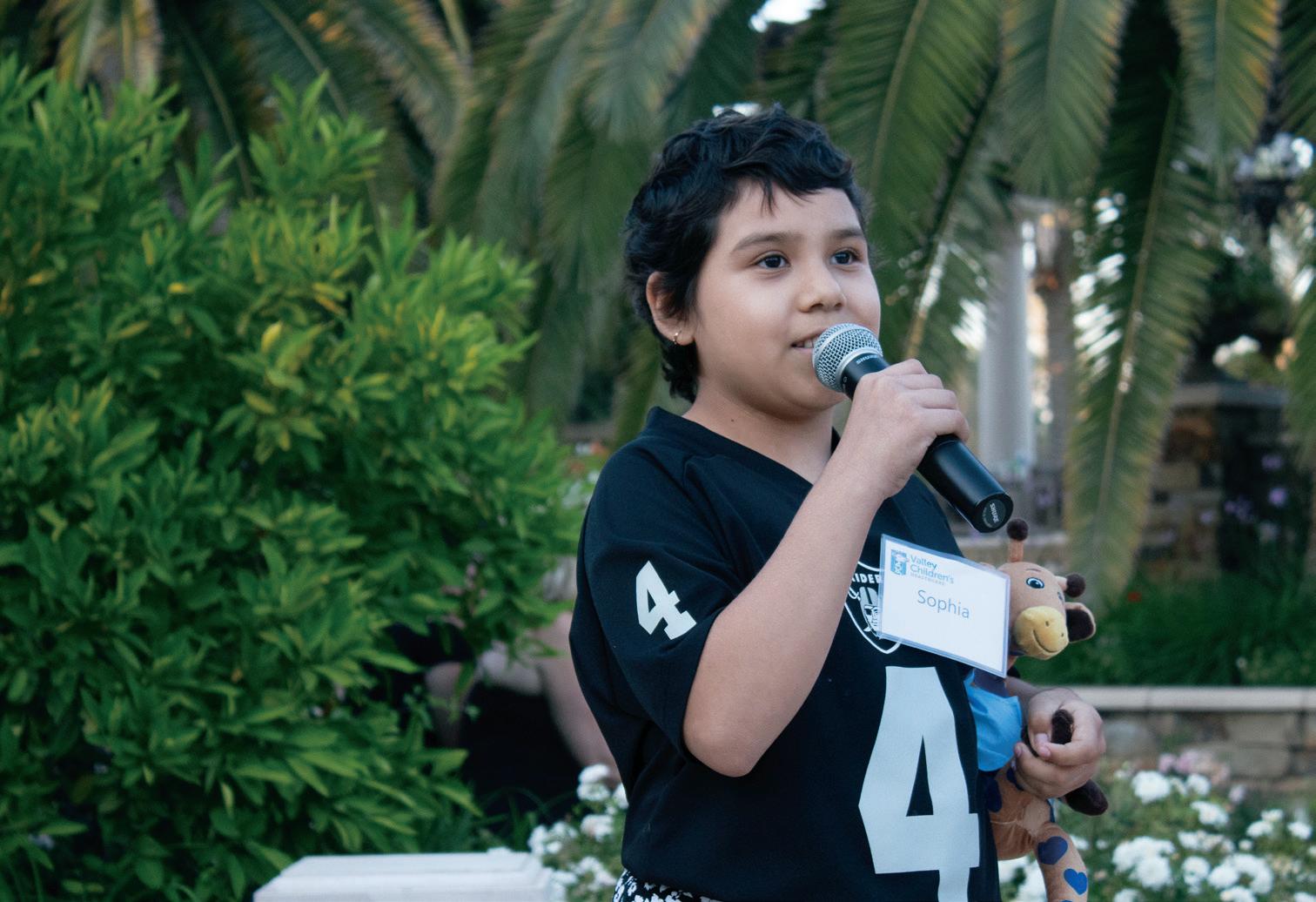

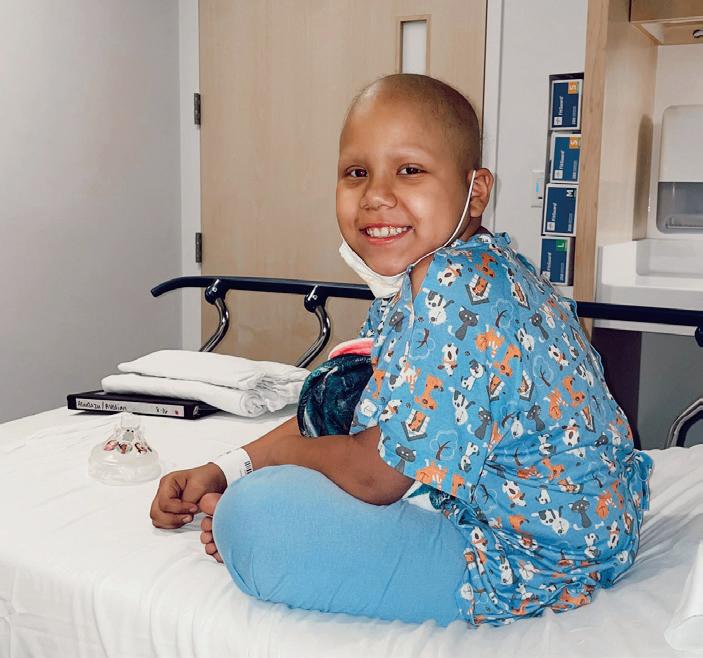
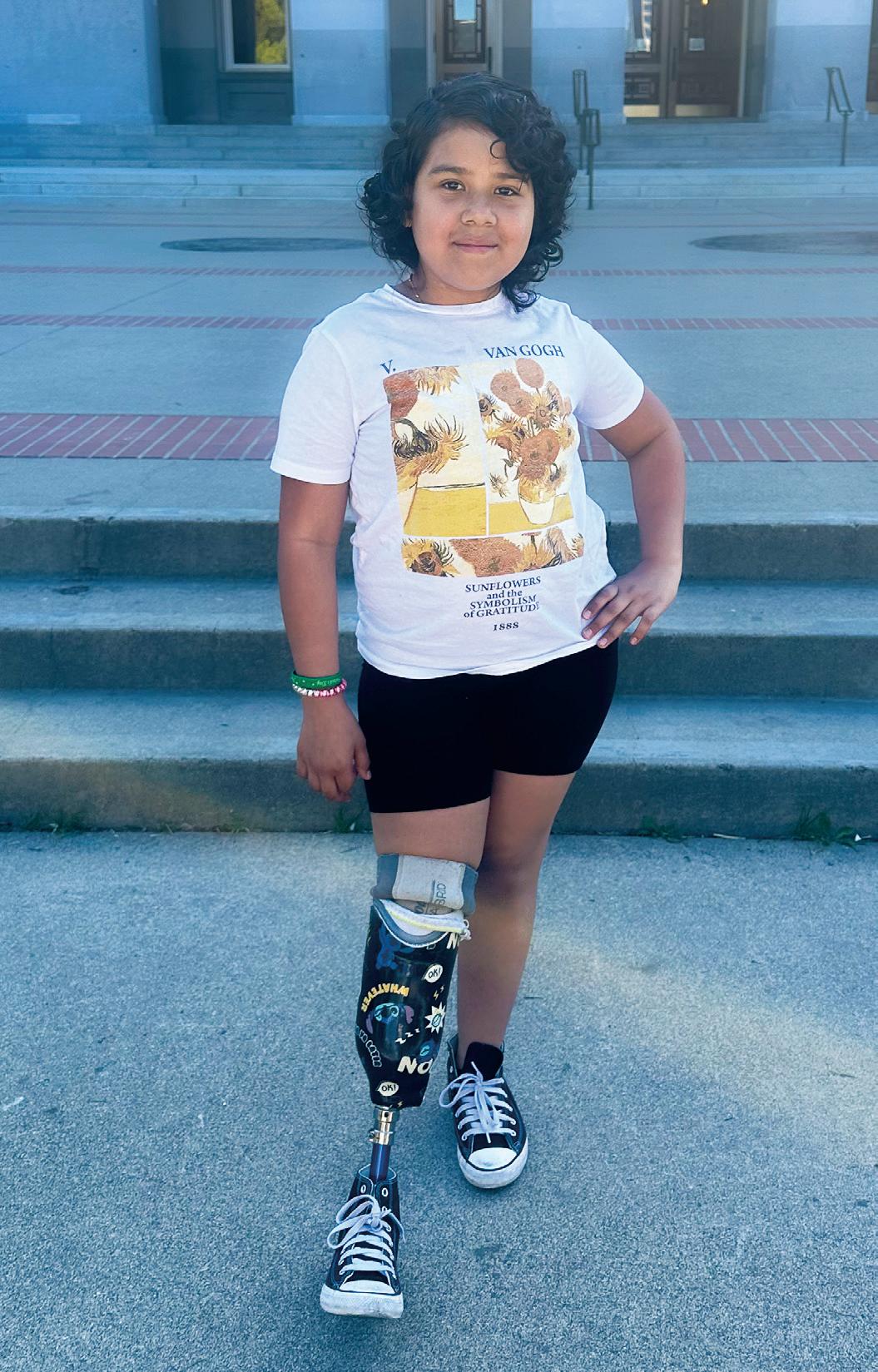

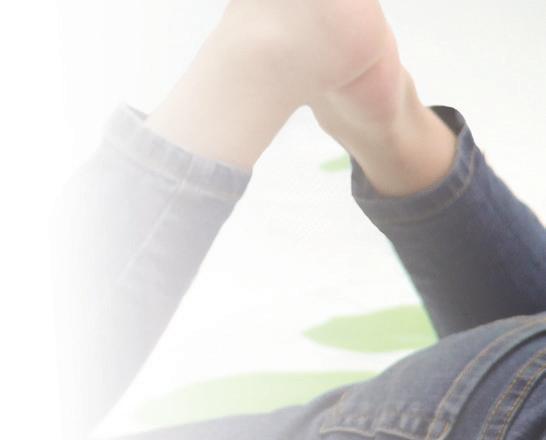
Valley Children’s is in our backyard, and we both grew up here. We love this hospital!
-Brittany, Davey Jean’s mom




Davey Jean was born with a rare genetic disorder called 22q11.2 deletion syndrome (22q). 22q happens to about 1 in 4,000 people. Those with 22q are at risk for up to 200 different known anomalies including, but not limited to, congenital heart defects, cleft palates, learning disabilities, developmental and speech delays, parathyroid malfunctions, craniofacial abnormalities and mental health disorders.
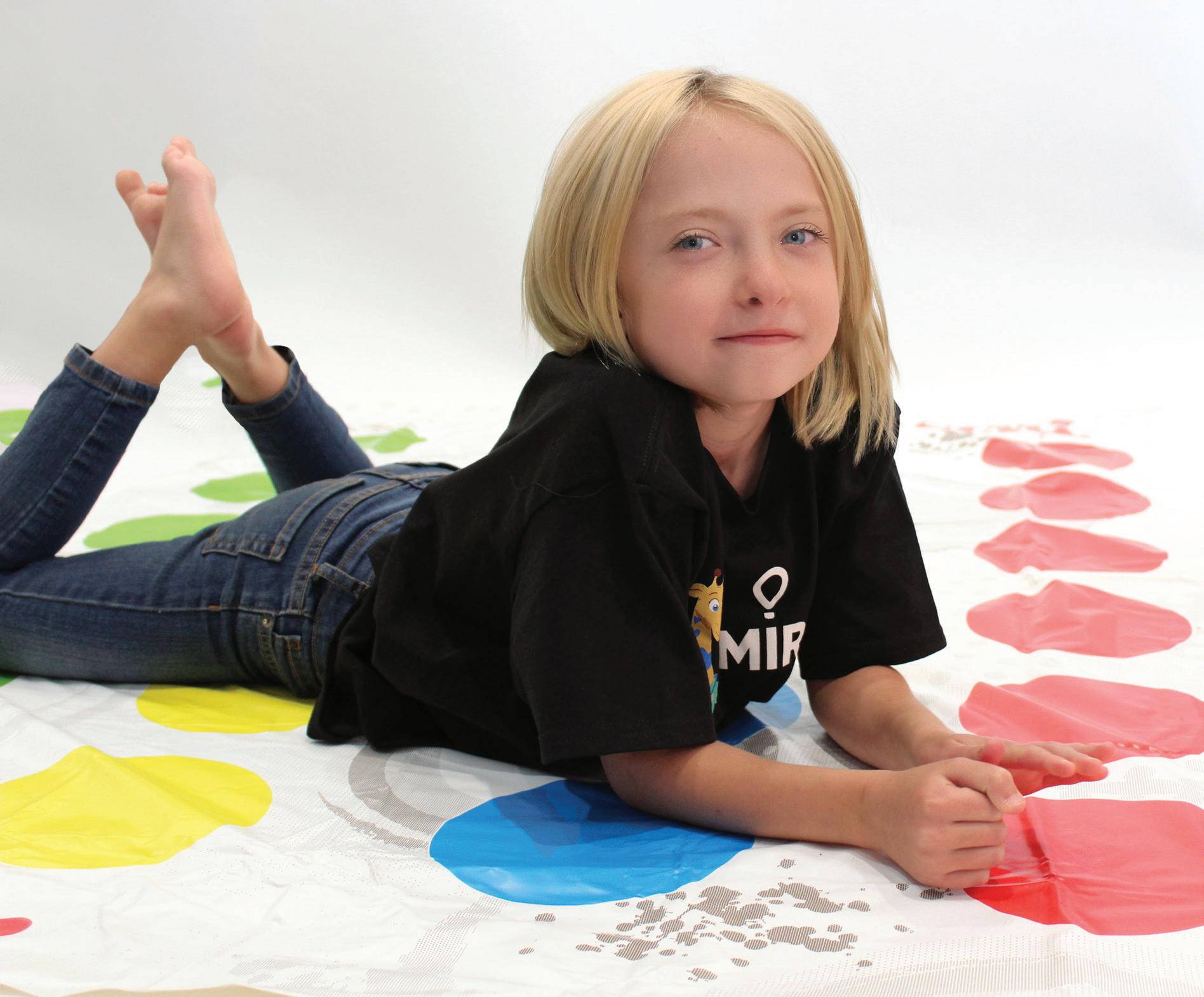
which made it nearly impossible for her to form sounds and words. The ENT department at Valley Children’s, along with the plastic surgery, audiology and speech therapy teams, all joined in an effort to help with Davey Jean’s hearing issues and speech delays. Their care has helped her become more verbal.
In Davey Jean’s case, she was faced with many of these 22q-related issues. At 30 weeks in utero, she was diagnosed with Tetralogy of Fallot, a compilation of four heart defects, and required open-heart surgery soon after her birth. Her parents entrusted her to the Willson Heart Center at Valley Children’s, which serves more than 9,000 families and children each year with advanced technology and state-of-the-art therapeutics for both congenital and acquired pediatric cardiovascular diseases.
Heart issues were not the only hurdle Davey Jean endured. By the time she was 3 years old, she was still non-verbal and used American Sign Language to communicate. Her parents learned that she had conductive hearing loss and would need ear surgery to help drain the fluid causing her hearing loss. Davey Jean also went through two complex surgeries for her Atypical Submucosal Cleft Palate,
Now 9 years old, Davey Jean has already undergone five surgeries at Valley Children’s. She continues to see Valley Children’s specialists in cardiology, plastic surgery, genetics, neurology, endocrinology, GI, neuropsychology and developmental pediatrics, as well as physical and occupational therapy.
True to form with most 22q children, Davey Jean has a big personality that comes in a tiny package. She is very active and enjoys playing with her friends, doing gymnastics and going to the park. She loves her family and adores her dog, Tater Tot. She is currently thriving in a private school that focuses on children with learning disorders, specifically Davey Jean’s dyslexia.
Davey Jean’s mom, Brittany, was also treated at Valley Children’s as a child, and feels an extension of family with the hospital. “Valley Children’s is in our backyard, and we both grew up here. We love this hospital!”
The nurses at Valley Children’s gave me the strength to hold my fragile little girl and they have been our greatest supporters every step of the way. I will forever be thankful for them.
– Manuel, Mahria’s dad
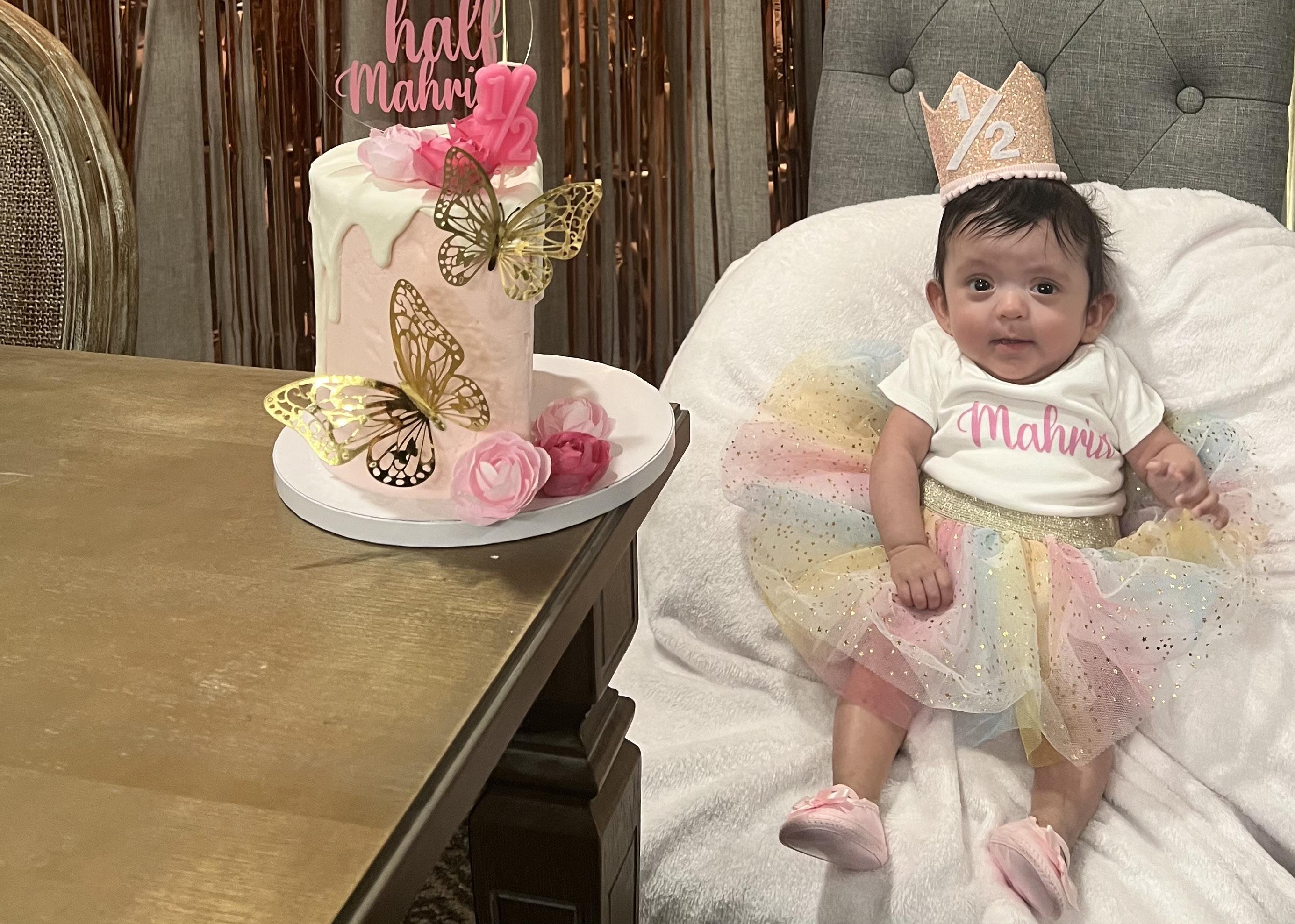
Michelle saw her healthy baby during a 20-week scan in February 2023 that carried the excitement as she learned she was expecting a baby girl. While her little girl continued to show all signs of good health, Michelle’s doctor found that her cervix had thinned to a level that was equitable to someone at full term.
“This visit changed my life forever as I learned that an early labor would be inevitable,” explained Michelle. “I wasn’t worried about me, I was worried about my daughter because a delivery this early meant that it was unlikely she would make it. As her mom, I was committed to doing anything because I had to give my daughter a fighting chance.”
Mahria was born on March 26 at 25.5 weeks gestation by emergency C-section. She weighed 1.6 pounds and was immediately transported to Valley Children’s.
Mahria had been placed in an isolette to keep her safe and warm until her little body could regulate her body temperature by itself. She required a breathing tube for some time, but as she continued to grow and progress,

she would learn how to control her body temperature, breathe and regulate her blood pressure all on her own.
“Walking out of the hospital without my daughter was the hardest thing in life because I never imagined there would be so many barriers between me and my baby – it was my health, the distance, double doors into a NICU, a code and then an isolette – but when I was finally able to reconnect with Mahria, I felt great peace and gratitude knowing and seeing that she had such great care,” said Michelle. “For our entire stay, the care at Valley Children’s went beyond Mahria and extended to our entire family.”
After 81 days in the NICU, Mahria was healthy and ready to go home.
On September 26, Mahria celebrated her half-month birthday with her family, including Maharazi, who makes her laugh and smile all the time. Mahria loves the sound of her big sister’s voice, joining in on family discussions with her sweet babbling words and sucking on her little fingers.
“It is with an extremely full heart and all the gratitude in the world, that I can say my daughter is well,” said Michelle. “The nursing staff at Valley Children’s gave us what no one else could: the family we are today, which is more than I could have ever hoped and dreamed for.”
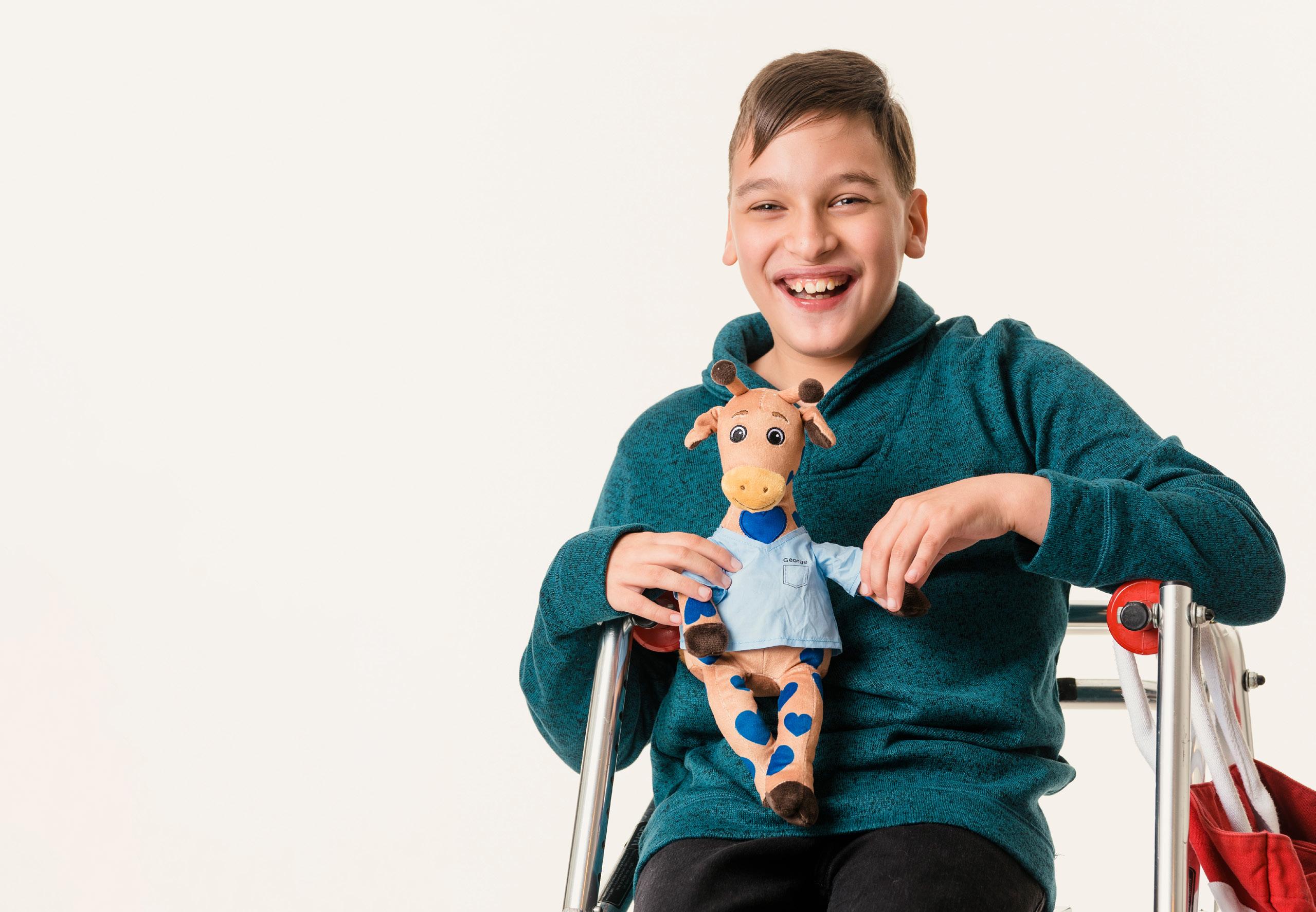
Born at just 24.5 weeks gestation, Connor weighed 1 pound, 13 ounces and was in need of specialized care to survive. He had developed bleeding in the brain as a result of extreme prematurity and received care at Valley Children’s where leading specialists and his fighting spirit saved his life.
“There was a moment when Connor was first born that we weren’t sure if he was going to make it because he was so premature,” said Susan, Connor’s grandma. “His outcome was uncertain, but the NICU team did an outstanding job caring for Connor.”
Connor was diagnosed with cerebral palsy meaning that he would have difficulty with movement and maintaining balance due to
muscle weakness. He has had several surgeries including a shunt placement and replacement, as well as spinal surgery to improve his ability to walk.
Today, Connor is 11-years-old and thriving! He is able to walk with the use of a walker and can fly down the street on his adaptive tricycle. Connor enjoys playing with his friends at school, gaming at home and participating in kayaking and baseball through Valley Children’s Adaptive Sports program.
“Connor had excellent care from the time he was admitted to the NICU to today,” added Susan. “We are grateful for the doctors and care teams at Valley Children’s who have been wonderful to Connor and our family.”
The staff not only made Addy feel like she was important but did the same for her father and me.
-Kelly, Addisyn’s mom
It was November 2020 when Kelly and Joey received the news that catapulted their family into a world they never asked to explore. Addisyn, their sweet three-year-old daughter, vibrant and extroverted, faced a reality that no child should ever have to come to terms with: Addisyn had cancer.
Only months before, Addisyn was busy celebrating her third birthday. This was when she first developed symptoms. That October, Addisyn expressed discomfort in her chest and ran a 21-day fever. She made numerous trips to a local hospital in Merced, where they first attributed her pain to normal symptoms of COVID-19.
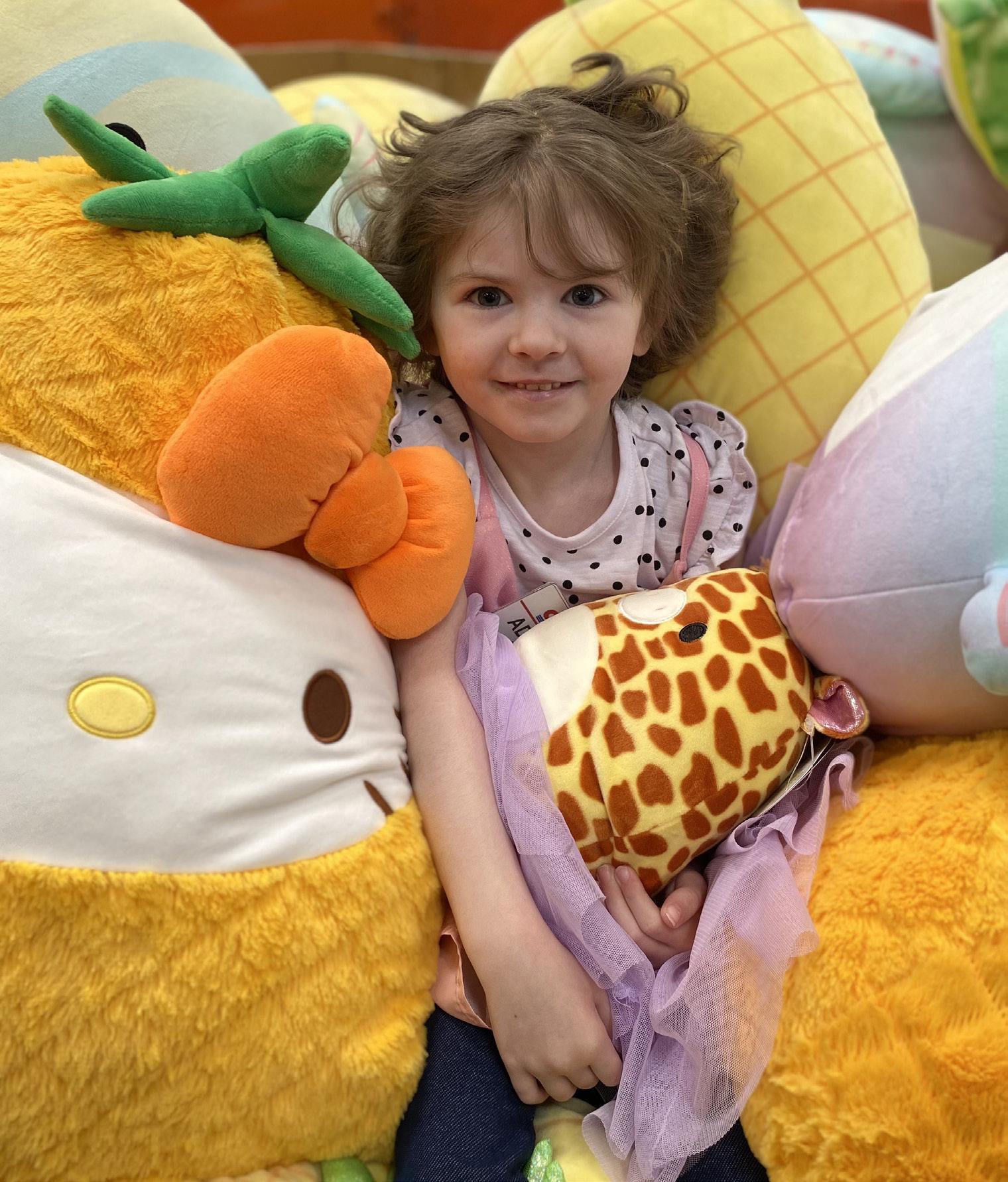

cells begin dividing uncontrollably. Addisyn’s HS would be treated as a high-risk leukemia.
Experiencing childhood cancer is hard, especially when it’s a rare cancer without a clear roadmap of available medications and treatments. Addisyn spent the next six months in the hospital, receiving chemotherapy treatment, blood transfusions and fighting off infections. She contracted a C. diff infection and mucositis (inflammation caused by some cancer therapies) twice, developed an allergic reaction to her medications and was put on a feeding tube. For a period of time, her weight dropped to just 15 lbs., and she lost the ability to walk.
But the next day, Addisyn’s neck swelled painfully and she lost feeling in her left arm. She was rushed to Valley Children’s Hospital where she had a biopsy of her neck performed, and their worst fears were brought to life.
Addisyn’s initial diagnosis was that she had lymphoma. Further examination and testing revealed Addison had an extremely rare and aggressive cancer called histiocytic sarcoma (HS), which comprises approximately 1 out of every 10 million pediatric cancer diagnoses. Histiocytic sarcoma develops in the body when white blood
But her nurses were always there to guide her, eventually teaching her how to walk again. They motivated her with stickers, temporary tattoos and a lot of laughter. Throughout Addisyn’s treatment, Valley Children’s helped the family keep their spirits up. From teaching Kelly and Joey how to give her injections from home to explaining every step of the process, the family was reassured that Addisyn was under the care of a team that was managing her treatment while prioritizing their peace of mind. Today, Addisyn is in maintenance and enjoying life on the road to recovery.
The first
year of his life,
we spent six months at Valley Children’s. That’s where he needed to be. So many of the staff are like second family.
-Veronica, Mac’s mom
At 37 weeks pregnant, Veronica woke up in labor at 4 a.m., then rushed to the hospital. A little more than an hour later, Mac was born. Mac had spina bifida and a severe form of Chiari malformation, a condition where brain anatomy extends into the spinal canal. Because of his critical condition, he was transported to Valley Children’s Hospital with his father and pastor trailing close behind.
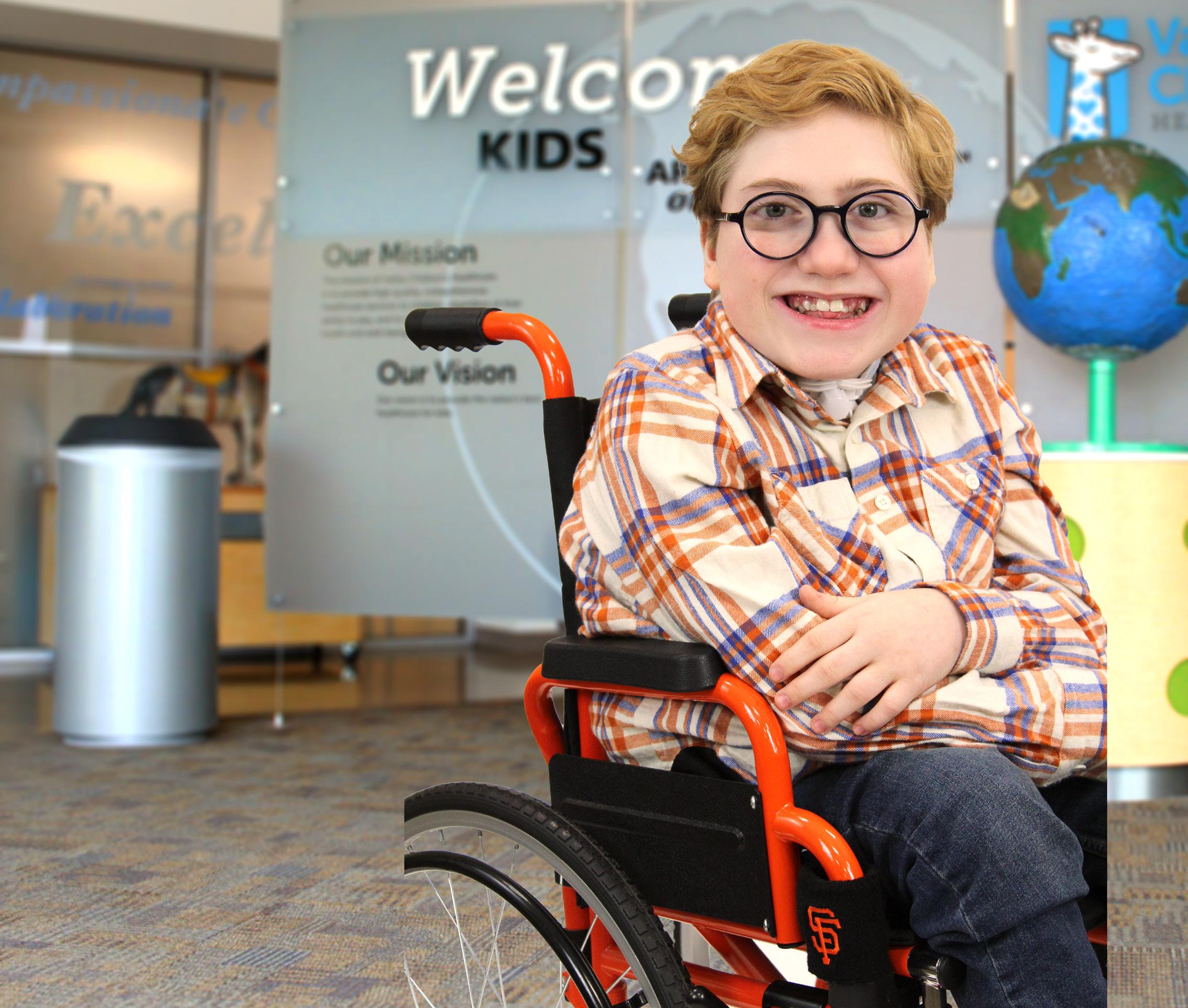
A little more than just 24 hours after his birth, Mac had surgery to close his spina bifida lesion and was treated in the neonatal intensive care unit (NICU) for over two weeks. Veronica sat next to Mac, talking to him while he was in his isolette incubator.
Mac has been admitted to the hospital more than 100 times, with 14 weeks being his longest inpatient stay. His diagnosis has caused him to need a tracheostomy tube to help him breathe and a gastronomy tube to help him eat.
Through the years, Mac has received a total of 34 major surgeries at Valley Children’s. Veronica says they have seen practically every specialty at the hospital, including neurology, neurosurgery, urology, pulmonology, ENT, gastroenterology,
plastic surgery, rehabilitation, orthopaedics and nephrology. “The trust doctors have shown in Mac’s ability is astounding. It’s something I have not found to be the case elsewhere,” says Veronica.
Mac is now 11 years old and in the sixth grade, homeschooled by his mom. He has a much-loved aardvark plushie he calls “Voth” and has a collection of George the giraffe toys.
While Mac enjoys reading, and playing video games, board games and card games, he absolutely loves watching sports, especially baseball and football. One of his favorite teams is the San Francisco Giants, whose colors he proudly sports on his wheelchair.
Despite his medical struggles, Mac has always been a happy child. Veronica says, “Mac is always smiling and always has a great attitude. No matter how his own day is going, his goal is for others to have a better day.” When he grows up, Mac wants to be a veterinarian or a sports agent. Veronica agrees either career path fits his warm personality perfectly.
There’s nothing that we could’ve done to make Joie better when she was sick, but the experts at Valley Children’s, they did it for us. We will forever be indebted to them.
-Joseph,
Joie’s dad
After Joseph and Brittany noticed that their two-yearold daughter, Joie, was having stomach pains, they took her to a local hospital. There, Joie was diagnosed with a bacterial infection from a specific strain of E. coli that put her at risk of developing a very rare and potentially fatal condition called hemolytic uremic syndrome (HUS). This secondary infection destroys red blood cells and can lead to kidney failure.
Soon after, Joie became even more ill from a fever and was transferred to Valley Children’s. When she arrived, she was immediately diagnosed with HUS and admitted to the Pediatric Intensive Care Unit, or PICU. After several nights in the PICU, Joie was then transferred to a specialized inpatient unit that was able to provide care targeted to her condition. The toxins from the E. coli O157:H7 bacteria were rapidly destroying her red blood cells, causing acute kidney failure. Joie’s treatment team of doctors, nurses, respiratory therapists, physical therapists and child life specialists collaborated to provide her and her family with the best possible treatment and care.
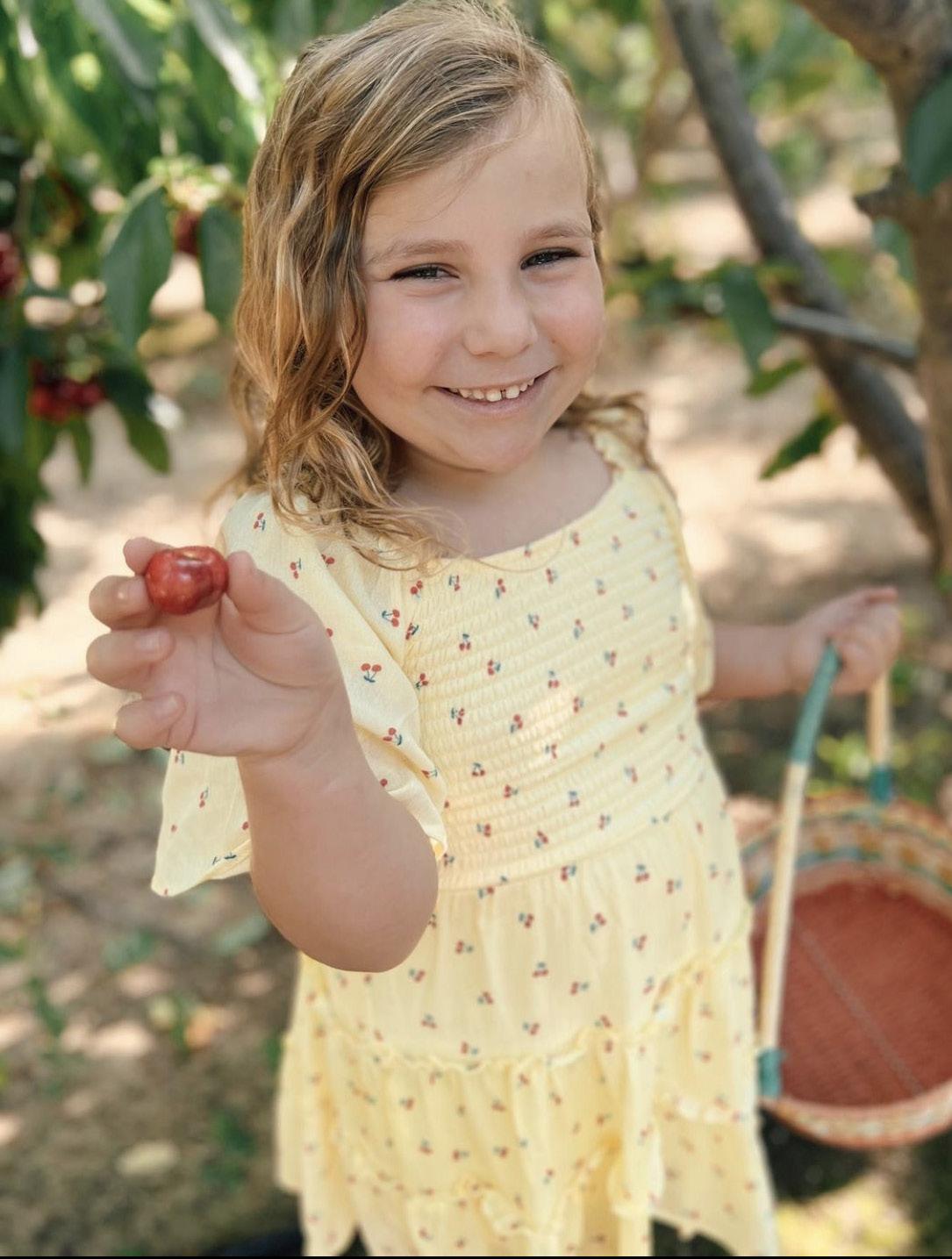
know what we needed to do next.” Thankfully, Joie made a miracle turnaround. Following her two-week-long hospitalization, Joie had to relearn how to walk, but was able to return home.
Today, Joie is back to being the girl her family knows and loves! Her parents are so grateful that she can receive her treatments close to home, and for the love that the doctors, nurses and staff have shown Joie during this time. Joie is now a happy and healthy five year old and recently advanced to annual nephrology check-ups at Valley Children’s.
Joie underwent numerous blood transfusions and oxygen treatments, and her team constantly monitored how her kidneys were functioning by running lab tests every six hours. Brittany says, “When we got to Valley Children’s, they knew what to do and how to deal with it. They walked us through every single step, letting us
Joie’s experience at Valley Children’s made a lasting impact on the family, inspiring the Macedos to give back. With the help of her big brother and sister, Joie picks and sells (and snacks on!) cherries from their family farm at their roadside stand, donating the proceeds to Valley Children’s. Joseph says, “We will forever be indebted to Valley Children’s for the sacrifices they make on a daily basis.” Their stand has received an outpouring of support from the community, and Joie’s family looks forward to next year’s cherry season.
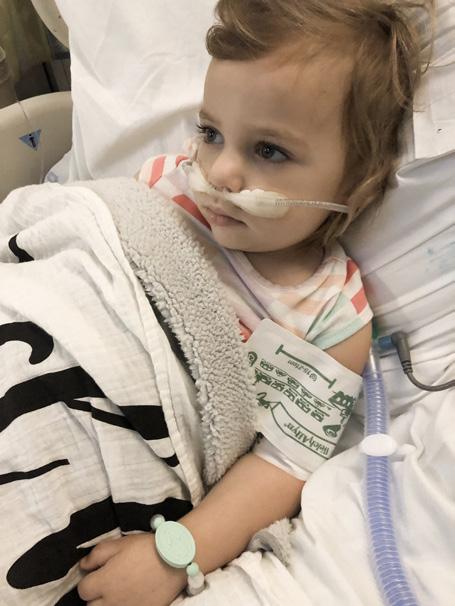

Thanks to experts in their field like Dr. Wang and innovative technologies like the da Vinci® Surgical System, children like Tito are able to get back to the important things in life –like being an 8 year old.
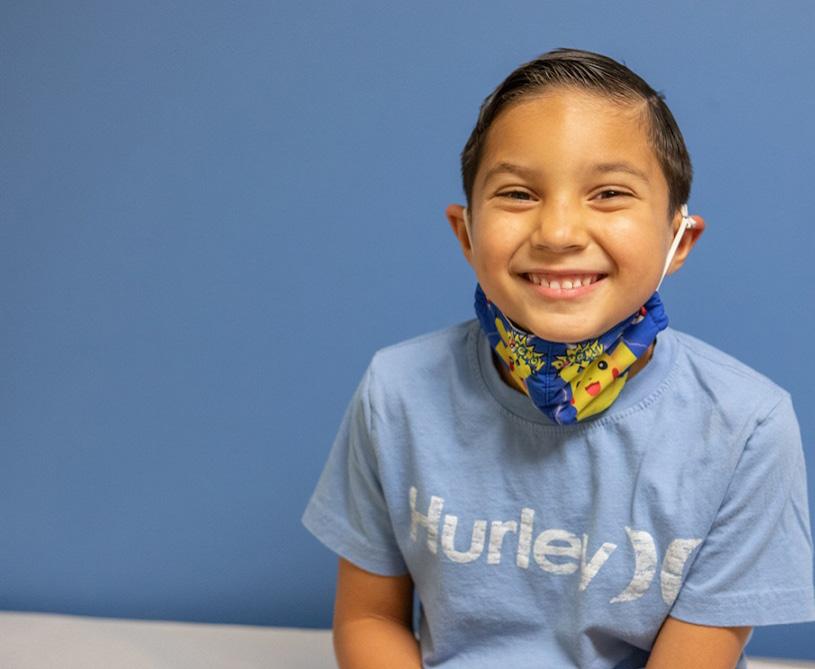
After years of consistent pains that were assumed to be stomach bugs, Tito now lives life like any other eight year old – thanks to Valley Children’s physicians with the help of surgery robots.

Since he was 2 months old, Tito went through periods where he would get such bad stomach pains it would lead to vomiting. Once Tito was old enough to communicate, he was able to identify to his family and doctors that the pain was in the left side of his lower back – where the kidneys are located. An ultrasound determined there was a significant amount of fluid stuck inside his kidney, prompting a referral to Dr. Lily Wang, Valley Children’s pediatric urologist. It was determined Tito suffered from hydronephrosis – meaning there was a blockage in the tubes that typically drain urine from the kidneys, causing the kidneys to swell up. After multiple appointments, Tito underwent surgery in August of 2021.
Surgery typically means hours under anesthesia, days in the hospital and a longer recovery at home. However, thanks to robotic-assisted surgery with the da Vinci® Surgical System, Dr. Wang was able to perform complex minimally invasive surgery with precision and accuracy, getting Tito back to being a kid faster.
“Robotic surgery is part of a bigger picture that helps patients getting back to being kids sooner,” explained Dr. Wang. “Compared to traditional surgery, procedures using robotic technology such as the da Vinci robot, results in less pain and scarring due to minimally invasive incisions.”
The da Vinci system translates a surgeon’s hand movements, bending and rotating the instruments while performing the procedure. The tiny wristed instruments move like a human hand, but with greater precision. The da Vinci vision system simultaneously delivers highly magnified, 3D views of the area, while using a device that only requires a few small incisions be made.
Thanks to experts in their field like Dr. Wang and innovative technologies like the da Vinci® Surgical System, children like Tito are able to get back to the important things in life – like being an 8 year old.
Rafael is now not only taking steps, but learning to walk on his own, when we thought he wasn’t going to be able to do any of that.
-Claribel, Rafael’s mom

Soon after birth, like every baby born in California, Rafael participated in the Newborn Screening Program (NBS), a public health program that screens all babies for many serious but treatable genetic disorders. The program began in 1966 with screening for one disorder, phenylketonuria (PKU), and has now expanded to include 80 different genetic and congenital disorders.
In 2020, after several years of advocacy by parents and organizations alike – including Valley Children’s – California officially added spinal muscular atrophy (SMA) to its newborn screening panel. And it is for this reason that Valley Children’s physicians were able to identify early on to diagnose Rafael with SMA.
“It is crucial for children with SMA to be diagnosed as early as possible,” said Dr. Raymund David, Valley Children’s pediatric neurologist and muscular dystrophy clinic lead.
“An earlier diagnosis means earlier treatment –and earlier treatment can make a big difference in the quality of life for the patient because it means that fewer motor neurons will perish, which can slow the progression of the disease.”
SMA is a neuromuscular disease that affects the motor nerve cells. It is caused by a deletion or mutation of the survival motor neuron gene 1 (SMN-1), a gene that produces a protein essential for nerve cells to function properly and control muscles. Without the SMN-1 protein, nerve cells become weakened and eventually die, leading to muscle weakness. This loss of muscle function
does not impact cognitive ability, but includes losing the ability to eat, swallow, breath and move – which often leads to fatal outcomes.
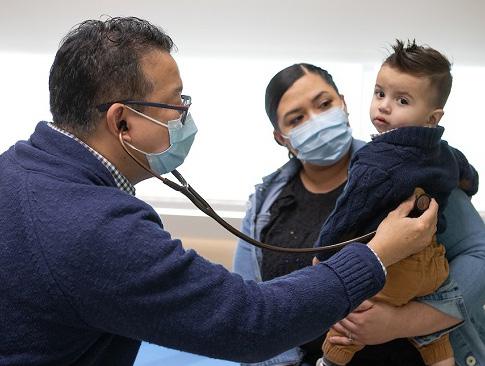
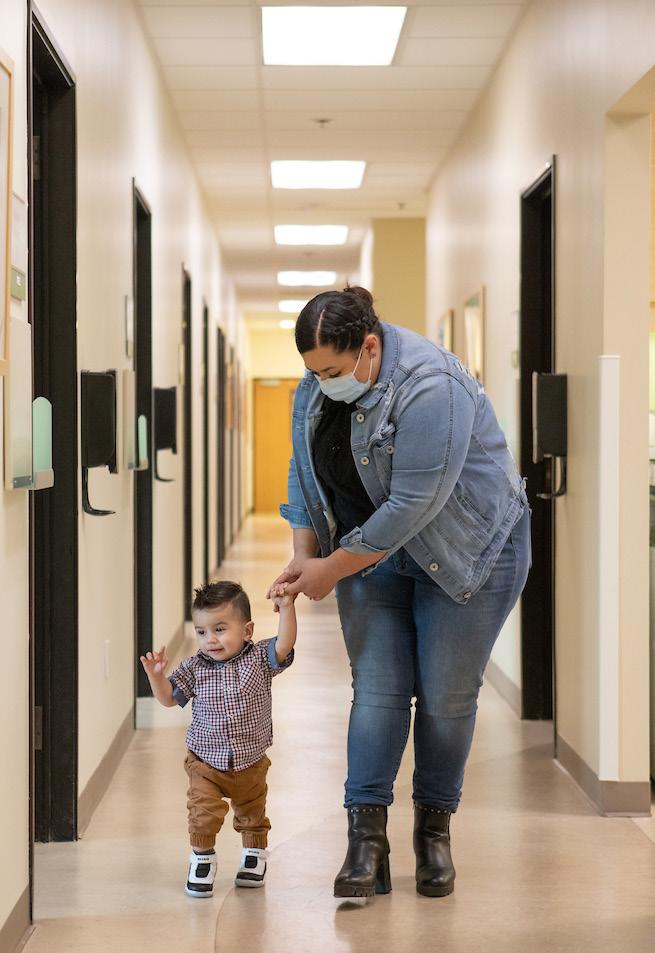
“After his newborn screening results came back, we received a call from our Valley Children’s nurse,” shared Claribel. “She explained we needed to come in, went over everything we should expect and what we would be facing, and ensured we would have a compassionate care team there every step of the way.”
There are five different types of SMA, each type based on the ages symptoms begin and the highest physical milestone anticipated. Based on research, Rafael was diagnosed with SMA type 2, which means an individual may be able to sit up without help and may need assistance getting into a seated position, but they are unable to walk and will require a wheelchair.
Today, Rafael is not only taking steps, but learning to walk on his own.
“The team at Valley Children’s gave me everything I possibly needed, from support to resources, and made the entire unknown just run so smoothly. They’ve been so helpful and I’m just so thankful,” said Claribel.
“In the past, kids with SMA may not have been able to walk, or even sit,” explained Dr. David. “With today’s treatments, kids like Rafael are hitting important childhood milestones and it’s just truly amazing.”
At just 6 years old, I remember asking my mom, “When will I be able to look ‘normal’ and have a nose like her?” As a little girl, I noticed I looked different from others...
My name is Anali, and I was born with a cleft lip and cleft palate. While my memories of seeking treatment are a little foggy or second-hand from my mom, I remember what I felt throughout the entire process so clearly.
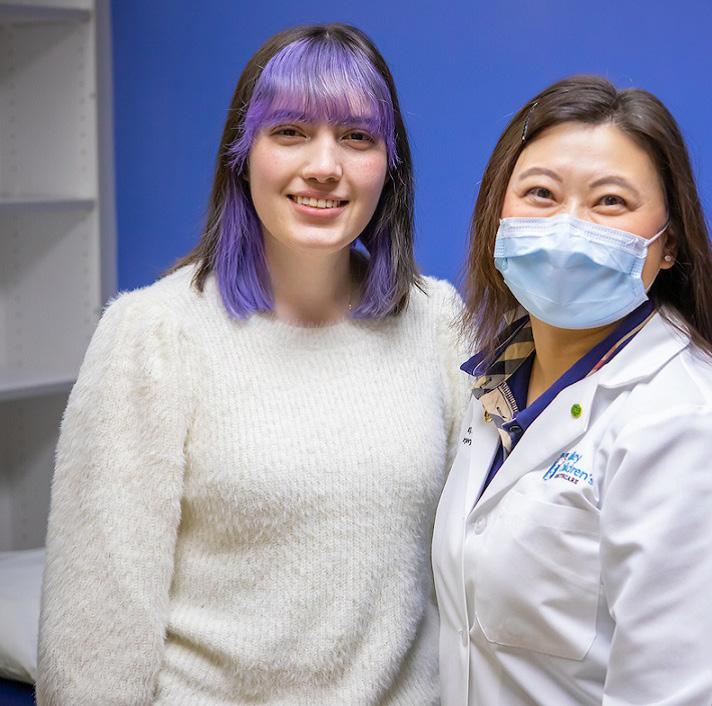
Cleft lip and palate are openings or splits in the upper lip or roof of the mouth (palate). Though cleft lip can be as mild as a notch on the lip, mine was from my lip to my nose. Surgery is common for treatment and I had my first procedure at just 5 months old and more throughout my childhood – seven total.
I had mixed emotions as I went through treatment –from feeling nervous and scared, to happy and excited. Many times, I would also feel relief because every procedure pushed me that much closer to recovery.
As a child, I didn’t quite understand the significance of each appointment or procedure, but I would feel a difference – I began to breathe better, I could eat much easier and I began to notice that my cleft lip and palate was less noticeable.
At 17 years old, I had my last procedure – surgery number seven. I looked forward to it because after years of treatment, it was all coming to an end. But, I was also sad that I would no longer have the consistency of regular appointments or see the doctors who helped and made me feel better along the way. This was all I had known since I was a baby and no one understood the
challenges I had faced as wholly as they did.
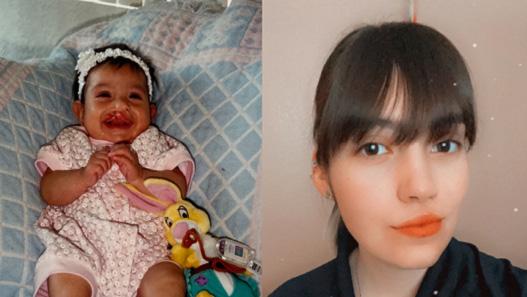
Even though there were times in my life when I struggled with having a cleft lip and palate, I am grateful for the inspirational people I met along the way and the perseverance I gained from my condition.
Today, I am 21 years old, a full-time student at Cal State Los Angeles majoring in biology and I work as a medical firefighter. My treatment experience has inspired my goal to go to medical school and become a doctor, not only help others medically, but also by sharing my story. I hope to be one of those doctors who are impossible to forget, just like the ones who have helped me all my life, such as Dr. Witt and Dr. Chao. I will never forget them, as I am thankful for their service and the impact they had on my life.
Not only did my doctors help my medical condition, they shaped the path that gave me the confidence I have today to help others.
July is National Cleft Lip and Craniofacial Awareness Month and I want everyone out there who was born like me, and who feel different because of it, to know: you are not alone. Everything will be okay, even if it takes time. Trust the process and everyone around you.
Despite the worst-case scenario, I felt ease because I knew my little girl was in good hands.
-Virginia, Olivia’s mom
Energetic, playful and always looking to jump and climb, Olivia was just like any other four-year-old although, from time to time, she would get a bellyache. Her tummy would start to feel worse and then bloat. When Olivia’s mom, Virginia, noticed her daughter staying on the sidelines rather than playing center stage, she met with a pediatrician who referred her to Valley Children’s for further testing.
Moments after X-rays and labs, Virginia carried a tired and weak Olivia to the car, but before she even left the parking lot, Valley Children’s called her back. Olivia was quickly admitted to the hospital. The images had revealed several tumors that surrounded both her lungs. There were so many, but it was a large, 15-centimeter one that the doctors were most concerned about. That same day, Olivia was diagnosed with a stage 4 Wilms tumor on her right kidney.
“My eyes were immediately flooded with tears and I felt like I was kicked into a different dimension that was no longer reality,” explained Virginia. “Within two days, Olivia completed testing, received a diagnosis and was already receiving the chemo. So despite the worst-case scenario, I felt some ease because I knew my little girl was in good hands, and that everything that could be done to help her was, in fact, being done.”
Wilms tumor is a common type of childhood cancer that starts in the kidneys and can spread to other parts of the body. Common symptoms include abdominal pain,
fever, a low number of red blood cells (anemia), blood in the urine, high blood pressure and even loss of appetite, weight loss, nausea, vomiting and tiredness.

After just six weeks of treatment, Olivia responded so well that most of her tumors were gone and the larger tumor had reduced in size by 50%! This allowed doctors to operate and remove her cancerous kidney. The road ahead consisted of ongoing chemo – two weeks home while receiving care in the clinic, one week in the hospital. This went on for about nine months until the doctors at Valley Children’s shared with Olivia that she was cancer-free!
“The goal the entire time was to remove her right kidney, but I understood all along that it would be a risky procedure,” added Virginia. “Her tumor was intertwined with so many veins, but her surgeon was able to scrape out every bit of cancer – and this saved her life. Because of the experts at Valley Children’s, Olivia could celebrate her next birthday. I am so grateful!”
On October 13, 2021 Olivia turned five years old and got to ring the No Mo’ Chemo bell at the hospital. That same day, Olivia introduced several relatives to her care team at Valley Children’s who are like Olivia’s extended family – everyone celebrating one very brave little girl… who is now back to playing at center stage.
Words cannot express our gratitude. The Valley Children’s team is what helped us make it through a very frightening time.
-Katie, Tyson’s mom
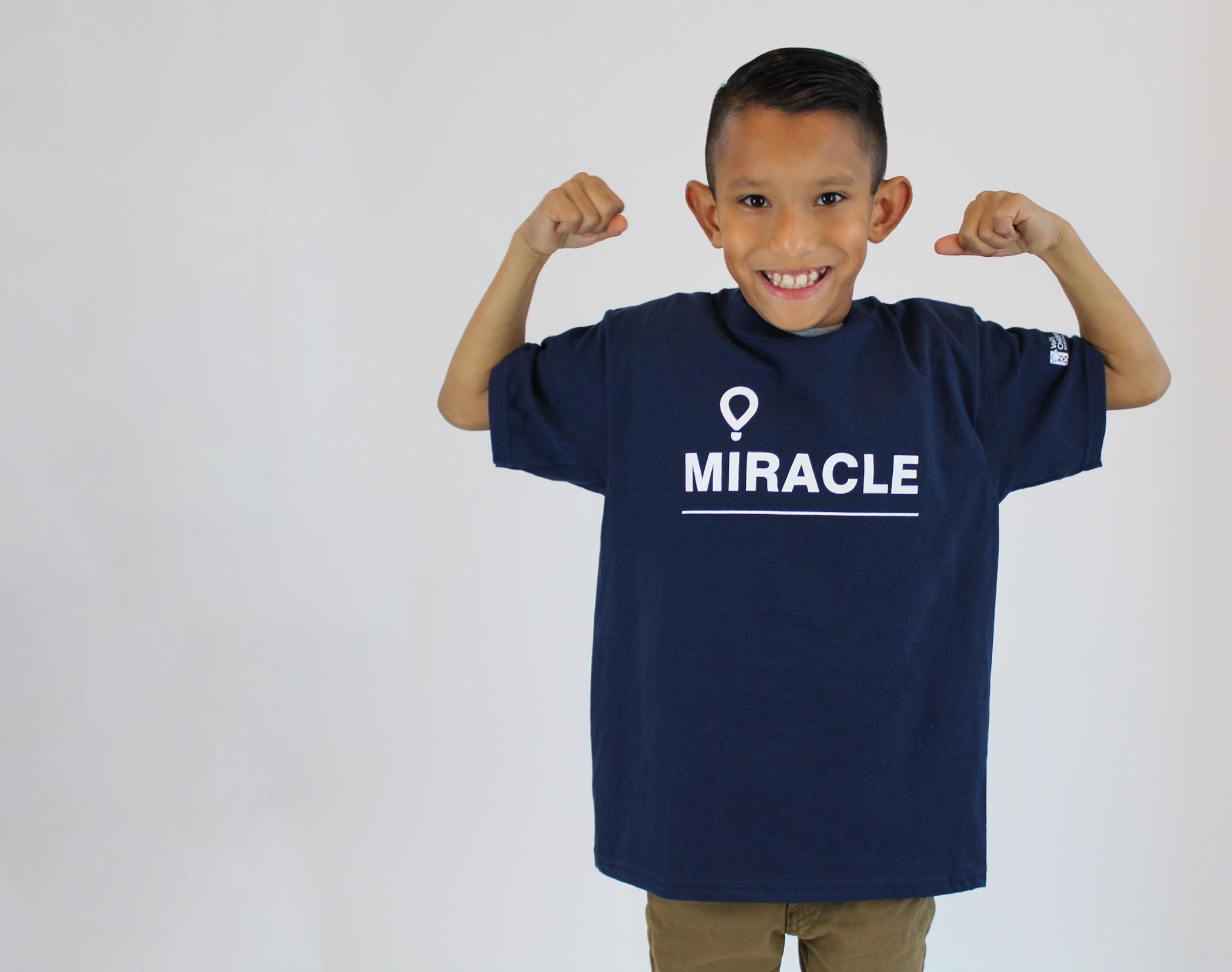
Weighing less than an unopened soda can and one of the tiniest babies born in the world, Tyson Perez was fortunate just to survive. Born at 24 weeks’ gestation weighing only 12.7 ounces, Tyson is living proof that even those as vulnerable as he was have a winning chance. Today, Tyson is 10 years old and loves playing baseball.
The little boy’s difficult journey began in the womb. An ultrasound at 19 weeks showed Tyson developing incorrectly. His mom’s diagnosis of preeclampsia, a potentially life-threatening disorder, compounded the situation. “Some suggested we terminate the baby,” Katie said sadly. “We didn’t want to make that choice.”
When Katie’s blood pressure soared and her platelets dropped rapidly, the baby was delivered by cesarean section and immediately transferred to Valley Children’s Level IV NICU. “He was a beautiful sight,” Matt said of his son’s birth on August 30, 2011.


At the time, of the 7,500 American babies born annually weighing less than a pound,

only about 10% survived, even with advanced medical care. A baby with Tyson’s characteristics stood only a 7% chance of survival without severe impairment, according to national preterm birth outcome data.
“It’s vital these preemies receive specialized care within that time frame,” Valley Children’s Chief of Newborn Medicine Dr. Jeffrey Pietz said. “Otherwise, it’s usually too late. The fact that Tyson survived and without any major comorbidities is remarkable.”
Weighing nine pounds by March 2012, Tyson was ready to leave Valley Children’s. He became part of a rare group when he went home. Pediatric specialists continue to monitor Tyson’s progress, including pediatricians who provide complex primary care at Valley Children’s.
Katie and Matt are proud of Tyson Matthew Perez and say his name fits him – but not in the way people might think. “He’s not named after the fighter Mike Tyson,” Matt explained, himself a mixed martial arts (MMA) fighter. “Tyson means ‘highspirited’ and Matthew, ‘gift of God.’ We think that’s perfect.”
The specialized care at Valley Children’s brought hope in an unimaginably difficult time.
-Jen, Elise’s mom
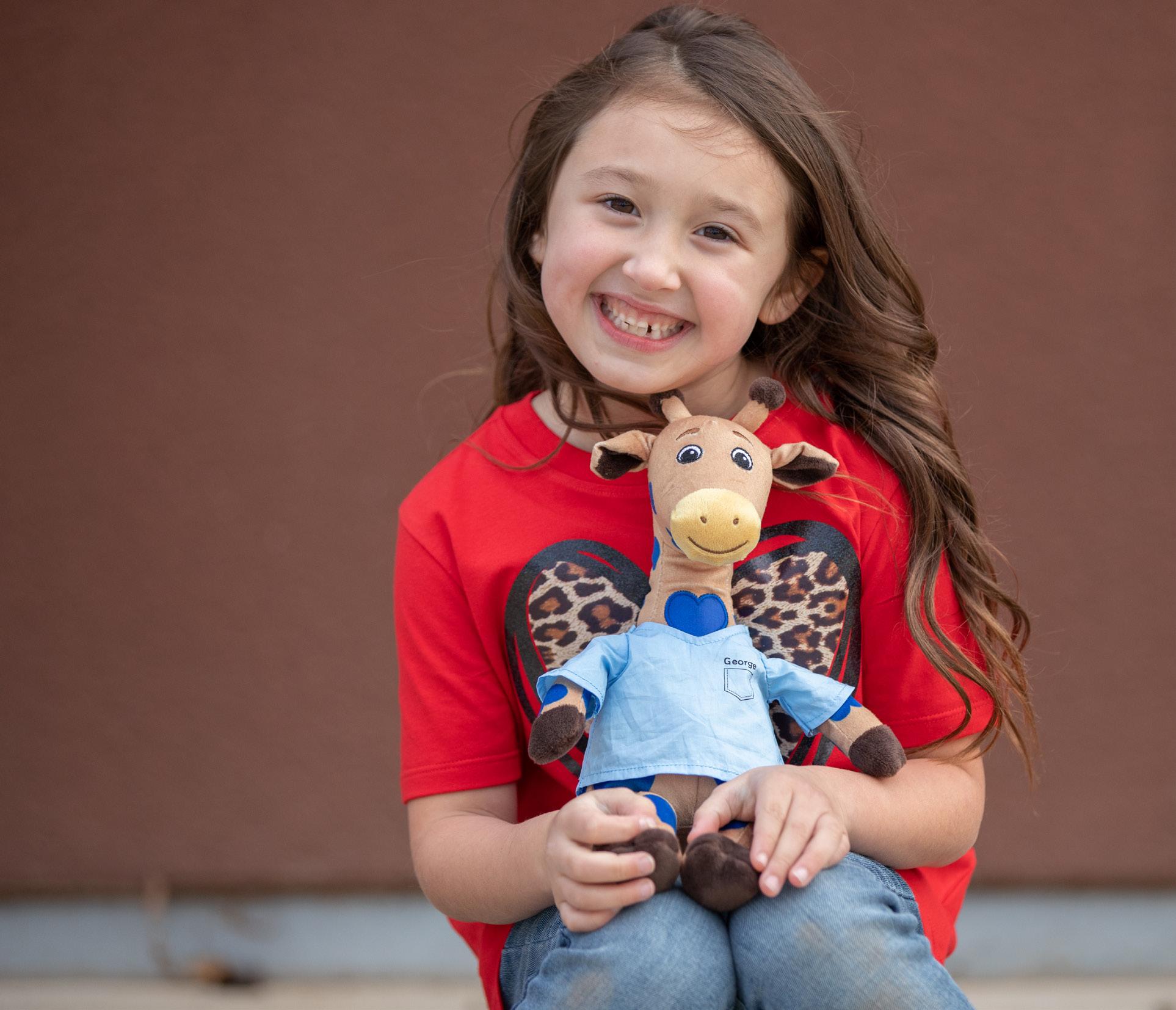
One of the special things about a children’s hospital is that our tiny patients who are seeking to get better are often the ones who demonstrate the greatest strength. They have an innocence that radiates a wholesome positivity. Behind a patient is most often a worried parent – and the will they find within themselves to demonstrate their pure love and support for their little ones always shines through.
Meet Elise. She was just a 5-year-old when she went in for a regular doctor visit. No one, especially her mom and dad, would suspect that anything was wrong. So when her doctor recommended some extra screening because he heard subtle clicking in her heart, they could not have expected that the unprecedented year of 2020 would also present an unexpected diagnosis that would lead to necessary heart surgery. Elise’s mom, Jen, remembers this day so clearly and was by her side every step of the way.
Even though Elise did not have any of the common symptoms, further testing confirmed that she had partial anomalous pulmonary venous return (PAPVR). Elise refers to it as an upside down heart
because it was pumping oxygen-rich blood into her lungs instead of to the rest of her body. During a time like no other, Elise needed a life-saving heart procedure from the experts at Valley Children’s to allow proper blood flow to her lungs and body.
It was June 22, 2020, the day of Elise’s heart surgery. And although Elise was in and out of sleep, Jen would capture her love and support for Elise as she watched her recover at her bedside by writing a beautiful letter.
After a five-day hospital stay, virtual visits and some extra screen time, Elise made a full recovery. Today, Elise is even happier and more enthusiastic than ever. She loves ballet class and wants to be a teacher just like her mom.
While the year posed its challenges, the specialized care at Valley Children’s brought hope in an unimaginably difficult time, and Elise brought a sparkle that ignited happiness for everyone around her. May the wholesome positivity and strength that children like Elise bring illuminate the future to come.
This hospital is like home. We know Norah is going to be welcomed here with open arms.
-Amanda
Kerr, Norah’s Mom
There isn’t much that can keep Norah Kerr down.
Cheerful and energetic, Norah lights up the room, whether she is practicing for her pageants, performing a new cheer or showing off her pink wheelchair.
When Norah’s mom, Amanda, was 18 weeks pregnant, Norah was diagnosed with Dandy Walker variant and congenital heart defects. Before Norah was even born, the Valley Children’s genetics team was working to determine the extent of her diagnoses.
As soon as Norah was born, she was sent directly to Valley Children’s neonatal intensive care unit (NICU) in Madera. During the first few weeks of her life, Norah was also diagnosed with spina bifida.
According to the Centers for Disease Control (CDC), spina bifida is a neural tube defect and “when the neural tube doesn’t close all the way, the backbone that protects the spinal cord doesn’t form and close as it should. This often results in damage to the spinal cord and nerves.” Spina bifida can cause many complications in the body, including problems with mobility, the excretory system, the gastrointestinal tract and learning disabilities.

With additional genetic testing and advancements in genetic medicine, Norah was diagnosed with Joubert Syndrome, a rare genetic disorder, and Emery Dreifuss Muscular Dystrophy, a rare inherited muscle disease, along with her diagnosis of spina bifida. Norah also experiences challenges with her gastrointestinal system, kidneys, heart, urinary system and intestines.
“We pretty much see everybody except for oncology at this hospital, knock on wood. So I feel like we’ve been everywhere. It’s not just one clinic for us. This is home. We know Norah’s going to be welcomed with open arms,” says Amanda.
Despite the multiple diagnoses, Norah is happy and active. She is already planning for her future: “I mostly wanna be a doctor at Valley Children’s . . . MOSTLY! I also wanna work at Disneyland,” says a smiling Norah.
“It might take her a little longer than most kids to reach those milestones, but she’s doing it. Our hope is that she continues to do things in her own time, and that she is happy and healthy and does things to the best of her abilities,” says proud mom Amanda.
Valley Children’s Hospital saved my son’s life!
-Fernando Escalante-Yanez, Fernando’s Dad

In early 2016, 5-year-old Fernando was not feeling like his normal self. The usually outgoing and energetic child was suddenly always tired and suffered from body aches, pain, night sweats and insomnia. Then amid all the pain from his joints and back, he developed a fever that couldn’t be dismissed. His parents, Fernando Sr. and Angélica, knew something was very wrong.
After a first and second opinion from primary care providers, Fernando was referred to specialists at Valley Children’s Cancer and Blood Disorders Center. They found Fernando’s white blood cell count extremely high, and concluded it was pre-BCell Acute Lymphoblastic Leukemia (ALL), a cancer of the white blood cells. “In that moment, I felt my heart break,” recalls Angélica.
Fernando Sr. and Angélica’s fears eased when they received hopeful news: Fernando’s diagnosis was treatable. Right after his diagnosis, Fernando had surgery to immediately place a port for his chemotherapy treatment.
For three and a half years, Fernando endured regular chemotherapy treatments. Week after week, month after month, it was not easy for young Fernando, but he persevered. Finally, in October 2019, 8-year-old Fernando got to ring the “No Mo’ Chemo” bell at Valley Children’s. This ceremony is for patients to mark the end of their
cancer treatment journey. Staff, family, friends and even Fernando’s baseball team were there to cheer him on.
Today, Fernando loves playing and watching sports. He especially loves playing baseball, his favorite sport. “He’s getting better, he’s running, he’s stronger,” says his dad. Fernando says his best memories while in treatment were meeting Las Vegas Raiders’ quarterback, Derek Carr-the first time as the Kid Captain at the Fresno State game that retired Derek’s jersey and a second time at a DC4KIDS Touchdown Challenge event.
Both his parents agree Fernando is very mature for his age. Maybe it was due to facing an incredible challenge at such a young age. They were thrilled to hear Fernando declare victory from his illness saying, “I feel so good now. I used to be so tired. Not anymore.”
Valley Children’s Cancer and Blood Disorders team helps hundreds of children like Fernando fight cancer every day. Our dedicated team of boardcertified pediatric oncologists and hematologists identify and care for about 150 newly diagnosed cancer patients a year.
Angélica says, “I’m so grateful. They make you feel like you are part of the Valley Children’s family.”
Through the years, we formed amazing relationships at Valley Children’s. We always want to support them any way we can.
- Dianne, Shawn & Adrianna’s Mom
Dianne Vanaman is a proud parent of two children with special needs, Shawn, 20, and Adrianna, 17. Adopted separately at very young ages, Shawn and Adrianna were both born with spina bifida, a birth defect in which a baby’s spinal cord fails to develop properly. Because of the developmental challenges of spina bifida, the children have been patients at Valley Children’s Hospital since they were babies. “We have spent a lot of time at the hill,” Dianne says, referring to the Hospital as the “Castle on the Hill.”
The siblings have some differences on how the disorder has affected them. Shawn has mobility with the help of leg braces, while Adrianna is not mobile at all, with no feeling from the waist down. They see multiple specialties from neurology to orthopaedics, nephrology and urology. Dianne says they are faced with random incidents all the time, such as accidental skin burns to unexpected infections so there are often visits to wound care specialists and to their pediatrician. Dianne admits she doesn’t always have “nerves of steel” to take on the everyday challenges of caregiving. But she says she is just like any other parent who has real moments of struggles and triumphs, stating, “The kids are troopers. If I could take this for them, I would.”
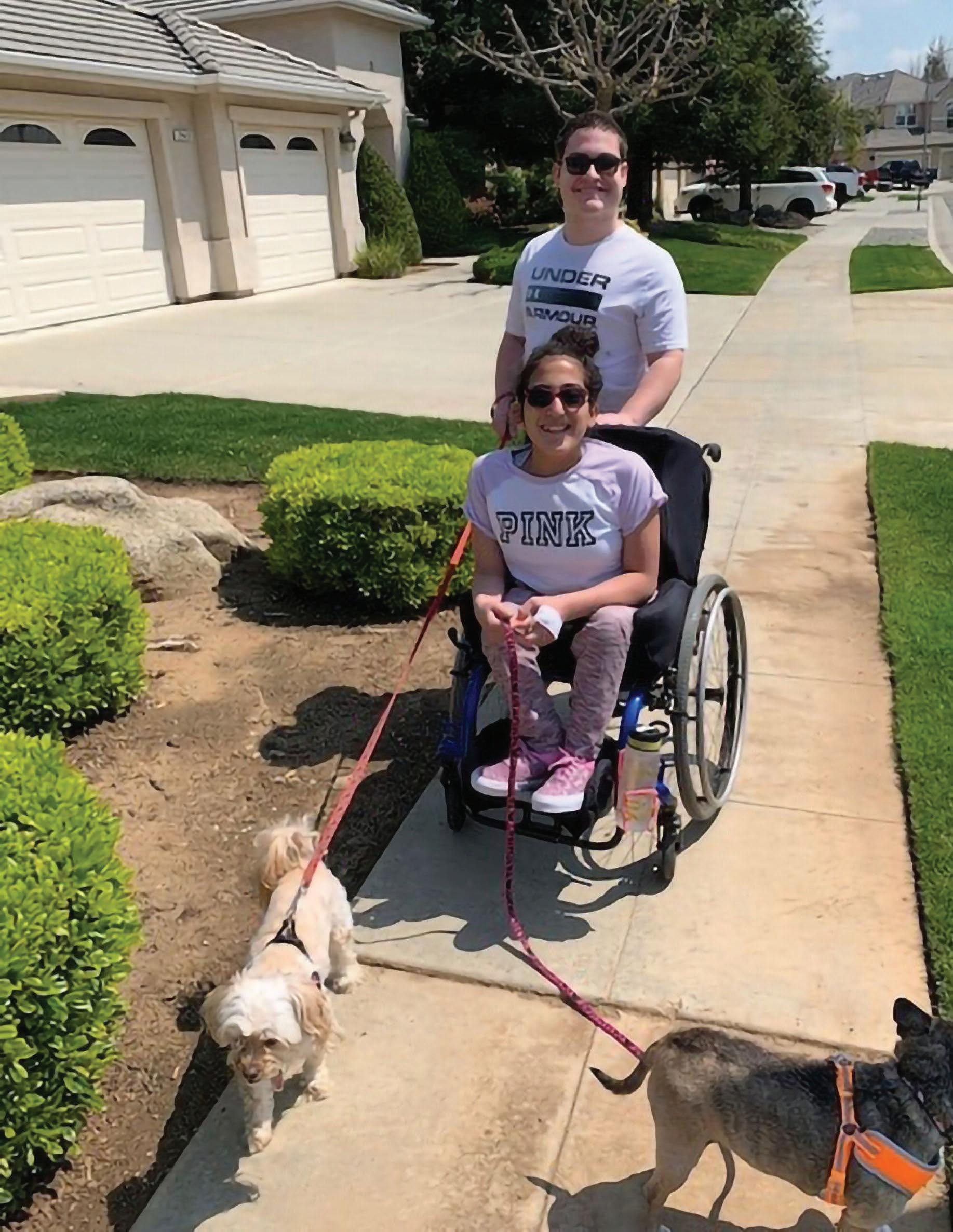
Both Shawn and Adrianna are involved with Valley Children’s Adaptive Sports Program, which provides free recreational and athletic experiences for those with disabilities. Shawn participates in rock climbing, wheelchair basketball and track and field, but his favorite of all the activities is water skiing. Adrianna enjoys doing the shotput, javelin and discus.
Over the past 20 years, the Vanamans have established so many close relationships with Valley Children’s staff, including the therapy dogs. Dianne recalls one of her son’s surgeons even taking time to attend Shawn’s basketball tournament when it came through his city. Dianne also remembers a nurse who went above and beyond caring for Adrianna during an inpatient stay. The nurse prepared a special setup for Adrianna’s room, then washed and groomed her hair so attentively.
Dianne reaffirms, “We’ve always had such positive experiences at Valley Children’s. We’ve met many wonderful people. It is top-notch. They truly care.”
It makes all the difference to have a staff that’s trained and knowledgeable.
- Amanda, Finley’s Mom
When Finley’s family explored their dream of having another baby, that journey led them to adoption.
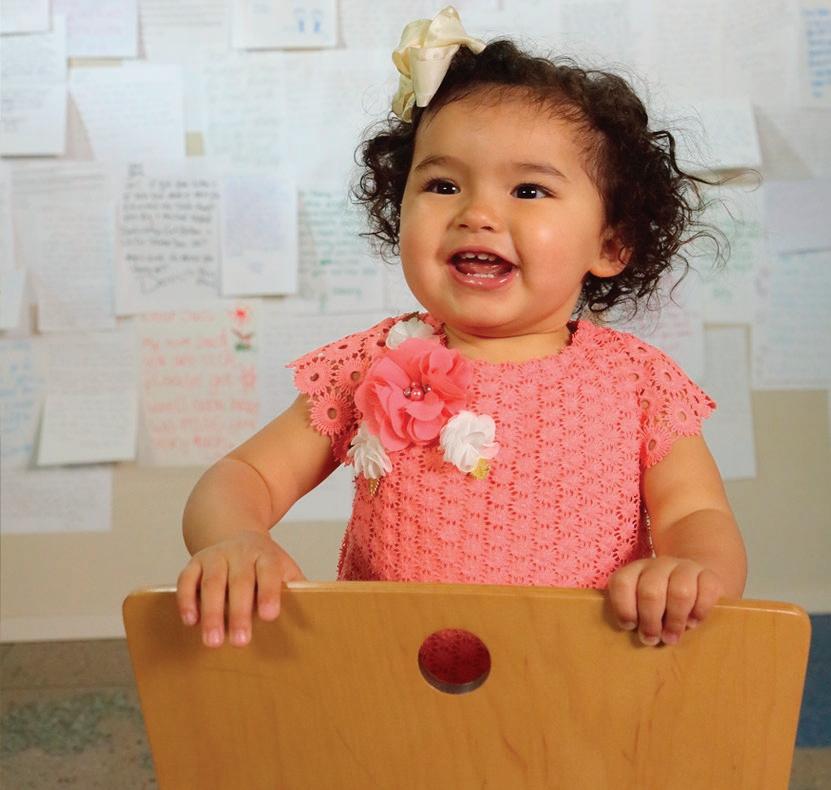
In the same moment they met Finley at just one day old, they also learned that she had a congenital heart defect – transposition of the great arteries (TGA) – meaning that the vessels that pumped blood to her heart were connected the wrong way.
Finley had to undergo lifesaving surgery where the experts at Valley Children’s repaired her heart by correcting the transposition, allowing proper blood circulation. “This is actually a very technically challenging operation,” says Dr. Malcolm MacDonald, Finley’s pediatric cardiothoracic surgeon at Valley Children’s regarding her arterial switch. “But when it goes well, fortunately, it goes very, very well.”
“I think the hardest period of that month was definitely the first 10 to 12 days,” Amanda says.
Finley made a full recovery and her parents were thrilled to take their little girl home.
“With Finley we’re just so fortunate that one surgery was able to repair the condition and now it’s just about following up,” she says. Valley Children’s staff always makes sure Finley feels comfortable on her yearly visits, according to Amanda. “Especially when she was younger, if she was fighting the echocardiogram, they would just not do it. They’re very patient with her.”
“I mean, even Dr. MacDonald himself is actually from Stanford – he’s Stanford-trained,” she said. “...We don’t feel like we need to leave the Valley to get great care.”
Finley has grown into a rambunctious little girl who loves reading her “Frozen” books and playing dressup. When not in preschool, the smiley 3-year-old can be seen rushing around her Fresno home, playing with her older sister and her dolls. She continues to visit the expert staff at Valley Children’s for a physical every year and her family continues to cherish the family they always dreamed of.
At my weakest time when she was having a seizure...I couldn’t help her and I couldn’t kiss that... away. And they kissed it away.
- Barbi Moreno, Sariah’s Mom
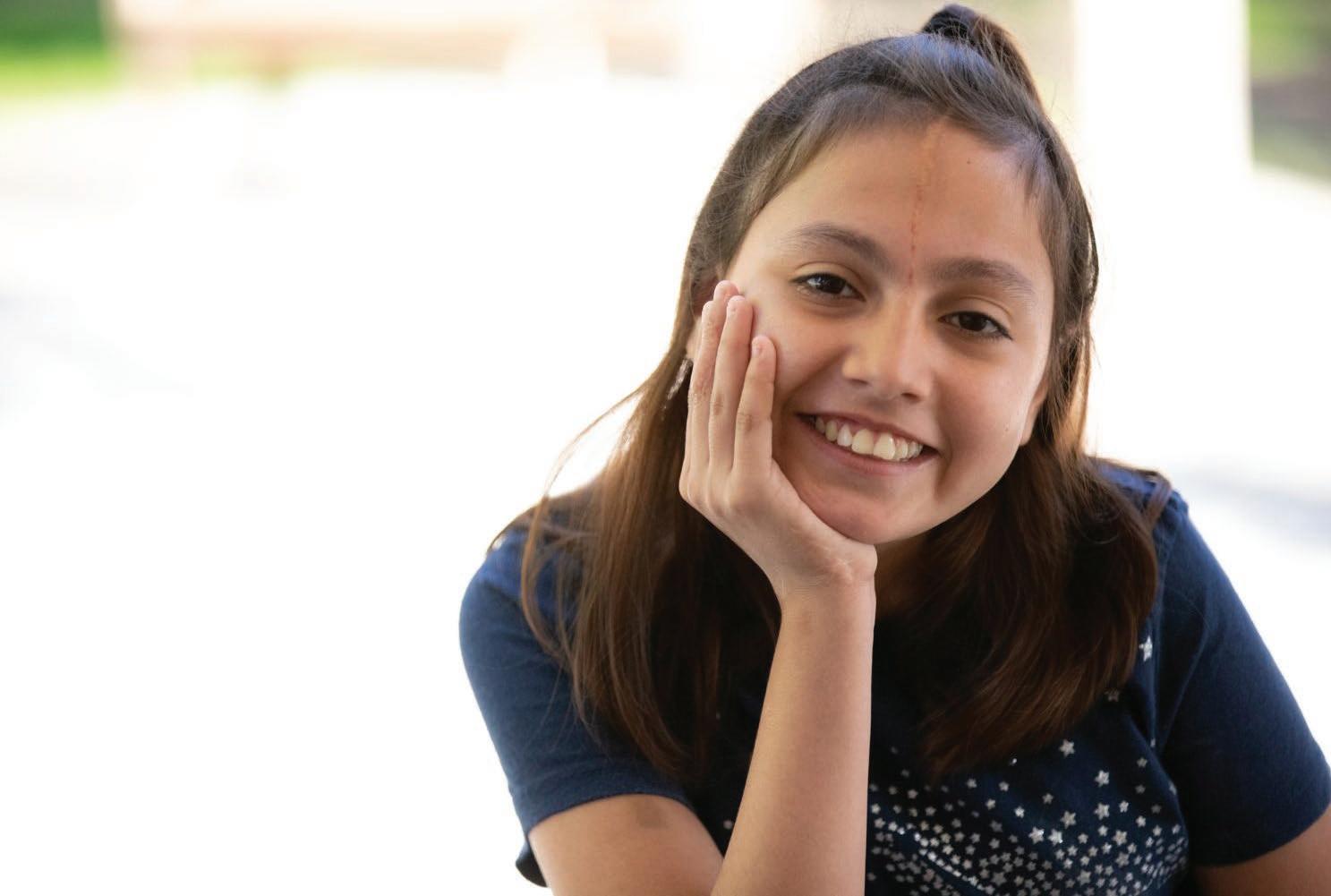
Have you ever experienced a seizure? Most of us haven’t. For Sariah on the other hand, a young teen in the Fresno area, seizures were all too common –occurring as frequently as twice a day.
Sariah was born with an interesting port-wine stain birthmark on her forehead. At first what did not seem concerning turned out to be Sturge–Weber syndrome, a condition that prevented Sariah’s brain from developing normally.
As a result, Sariah began experiencing seizures as young as five months old. The seizures were frequent and powerful for 13 years. Clearly, this dramatically impacted Sariah and her family’s life. Schooling was difficult, a vacation was impossible and small things like growing up were being stunted because of her seizures.
Struggling to find the best solution, Sariah and her family came to Valley Children’s. The family met with Dr. Cesar Santos, Medical Director of Neurosciences and Neurology. After monitoring her and looking at her EEGs, Dr. Santos explained there were options that could provide Sariah a life she could thrive in.
“I said it doesn’t really need to be like this,” explained Dr. Santos. “The only thing that the right brain right now is doing, is causing the seizure, and when it causes the seizure, it inhibits the left brain which [functions normally].”
Since birth, Sariah’s brain had not developed normally. Since the right side of her brain wasn’t functioning properly, Sariah’s brain started reorganizing itself, ultimately beginning to transfer certain functions to other areas of the brain. This ability, known as neuroplasticity, led to Sariah’s left side of her brain taking over normal functions, leaving the right side purposeless and merely causing seizures and interrupting the left side.
On November 2, 2018, Sariah underwent a six-hour procedure where the two sides of the brain were disconnected. This allowed the left side of the brain to completely take over.
Thanks to the neuroscience team at Valley Children’s, Sariah is now living seizure free.
It feels good knowing the nurses I grew up with are still here.
- Victoria,
Emoryi’s Mom
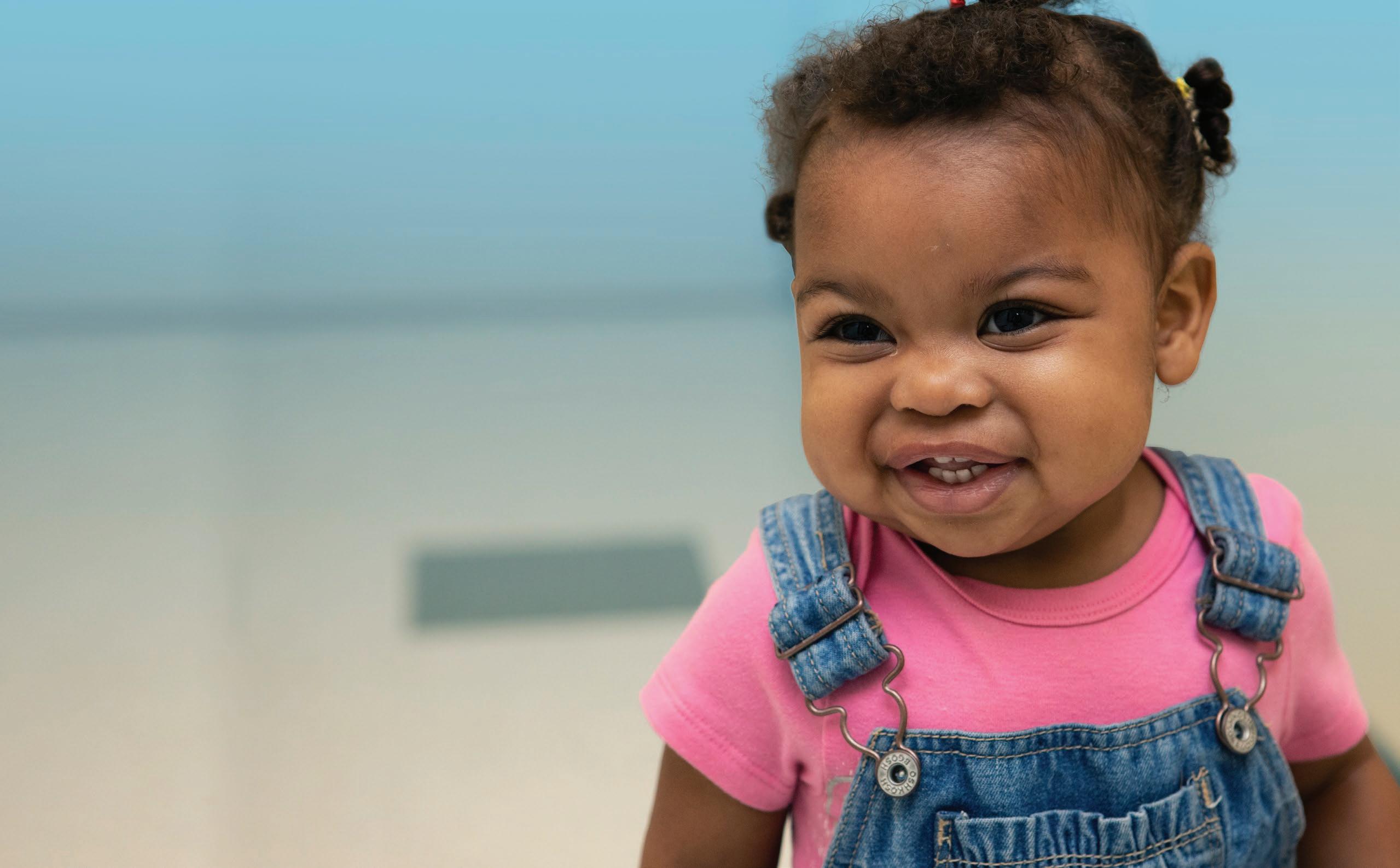
“She’s the family comedian – she can turn your frown upside down so fast,” says Victoria James about her 1-year-old daughter, Emoryi.
With her high spirits and positive attitude, one might not even know that Emoryi has a rare blood disorder. Emoryi received the diagnosis of Diamond Blackfan anemia at just weeks old. This diagnosis means that Emoryi’s body doesn’t produce enough red blood cells, as many of the blood cells she does produce die before they develop, leading to necessary specialty care and frequent blood transfusions.
However, Emoryi’s mother Victoria is no stranger to this diagnosis and treatment routine, as she was also diagnosed with Diamond-Blackfan anemia at just 6 months old and treated at Valley Children’s.
“It feels good knowing the nurses I grew up with are still here,” says Victoria. “It’s amazing how well these doctors know what they’re doing and it’s a comfort to know this team is here 24/7 for you, whether you have questions or not.”
Terea Giannetta, hematology nurse practitioner, treated Victoria as a pediatric patient and knows the concern parents might have when it comes to a rare blood disorder.
“Genetics are much better now than when Victoria was a patient,” says Terea. “So we did some genetic studies on Emoryi here at our genetics center, and then received approval to do the study on Victoria. We discovered they both carry a genetic mutation that has been known to cause Diamond-Blackfan anemia.”
Terea goes on to explain that while gene identification is still very new, the hematology and genetics teams at Valley
Children’s recognized the importance of it in the case of Emoryi and Victoria. While it is typically very hard to identify such a rare disorder in newborns, identifying the gene helped confirm Emoryi’s diagnosis.
“Because this diagnosis is so rare, if it isn’t recognized, it can be life threatening,” adds Terea. “If the patient doesn’t get transfused correctly as an infant, it can damage their physical and mental growth and inhibit their longevity. It’s so important these patients are seen at a qualified center where people educate the parents and even other providers. Because Diamond-Blackfan anemia is so rare, patients can have great providers who have never had experience with this disorder.”
This expert care is also the highest of priorities for Emoryi’s father, Kenneth Williams, Jr. After receiving Emoryi’s diagnosis, her parents knew instantly that at Valley Children’s, they would receive not only the best care, but also have the most compassionate staff who would welcome them to each appointment with smiles.
“I have to admit, I’ve never liked hospitals,” Kenneth shared. “But after working with Valley Children’s, it changed my whole perspective. After coming here, even the first time, each and every doctor and nurse changed my perspective of how a doctor is supposed to act. They treat me with nothing but kindness.”
Victoria explained why she is more than happy to come back every month to Valley Children’s: “When it comes to my daughter’s wellbeing and livelihood, especially when it comes to such a rare disorder, there’s no other option in my mind.”